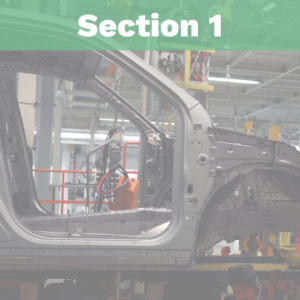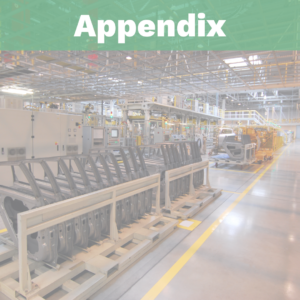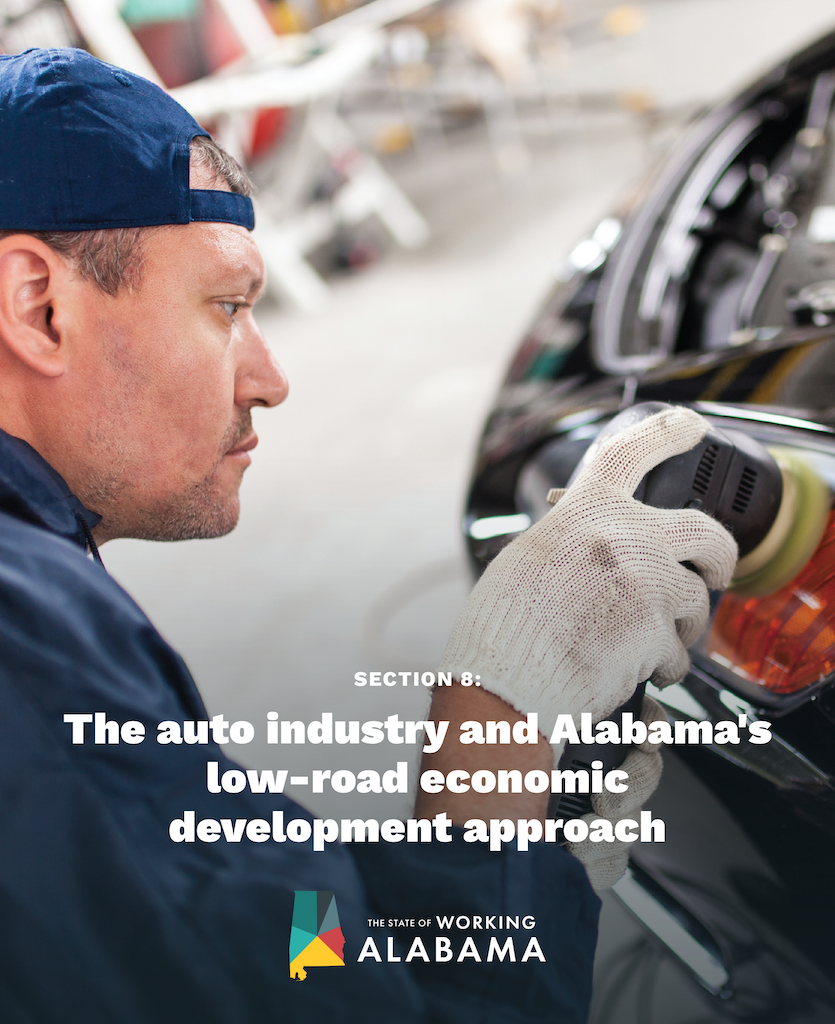Alabama’s big bet on the auto industry has only partially paid off, as wages drop and working conditions deteriorate at some facilities. In contrast to the sunny stories told by auto industry boosters, the industry’s shortcomings reveal broader shortcomings in the state’s overall approach to economic development, which still often embodies the low-road mindset of a century ago.
Alabama’s economic development approach has five main shortcomings, all underscored by the mixed results of the state’s long-term bet on the auto industry:
- Over-reliance on the use of incentives to attract industry to the state.
- Lack of direct wage standards in incentive programs.
- Absence of labor protections under state law.
- The Alabama Jobs Act continues to fall short for Alabama workers.
- Organized labor is a missing piece and essential partner.
Over-reliance on the use of incentives to attract industry to the state
Alabama has long relied on corporate incentives to attract industrial development, with subsidy programs dating back to the 1970s.[109] But the Mercedes deal represented a new, deeper state commitment to the use of corporate subsidies to attract outside industry. Since 1993, the state has invested nearly $4.5 billion in corporate subsidies and incentives,[110] with the auto manufacturing industry receiving more than a third of those incentives.[111] In many instances, these incentives included tax abatements, land improvements, job training and provision of transportation and reliable sources of raw materials.[112]
The state’s development officials rightly can point to thousands of jobs and millions of dollars in investment created by economic development projects they facilitate each year. But it’s worth repeating that all this important work has yet to bring Alabama’s wages up to the national average.[113] It has yet to reduce statewide poverty or racial income gaps.[114] And it has yet to lift economic mobility for Black children up to par with that for white children.[115]
Similarly, while incentives certainly played an important role in attracting auto manufacturing plants to Alabama in the first place, two facts remain true. First, hundreds of millions of dollars in state subsidies have failed to keep auto pay from falling or working conditions from worsening. Second, Alabama’s experience with incentives and the auto industry may be an outlier that is not easily transferable to other industries. Decades of scholarly and policy research tell a consistent story that incentives are usually not decisive in influencing corporate location decisions.[116]
If a business indeed decides to locate in Alabama, there is no guarantee it will stay, or even create the jobs it promises. Yet the state is always out the money that it spent or the tax revenue that it abated to create jobs that may never materialize. Though not an auto manufacturer, Shipt provided a recent illustration of this problem. Shipt, a Birmingham company acquired by Target in 2017 for $550 million, recently terminated its incentive agreement with the state after hiring hundreds fewer Alabamians than the 881 workers it had promised.[117] Local incentives also were curtailed.[118] But even with such a shortcoming, the company pocketed $2.8 million in incentives, and moreover, the decision to terminate the incentive agreement came from the company, not regulators,[119] illustrating the lack of external accountability safeguards.
In addition, Alabama’s billions of dollars of incentive packages largely have come at the expense of the state’s education budget.[120] This is the case despite the state historically underperforming many others on numerous education quality and attainment measures.[121] Paying for incentives in this way directly undermines the key factor that increasingly global and technology–dependent companies care about most when considering where to locate a new plant or headquarters: the skill and educational attainment of the workforce.[122] Paying for corporate incentives by diminishing education revenues undermines the investments in people that empower them to obtain the technical skills that companies prioritize most highly.
Lack of direct wage standards in incentive programs
The fact that Alabama’s auto plants continued to receive incentives despite paying steadily lower wages highlights a glaring omission in the state’s economic development efforts: There are few direct efforts to increase earnings for the state’s workers. Specifically, Alabama has failed to include prevailing wage policies in its incentive packages. A prevailing wage is a minimum benefits and hourly wage standard that requires companies to offer compensation packages comparable to what workers employed in similar jobs throughout the industry receive.[123] Requiring auto manufacturers to base their wages on typical market salaries already received by workers in the industry would help prevent companies from shortchanging other workers and undermining standards that exist in other parts of the country. [124] The U.S. Congressional Black Caucus has noted that prevailing wage laws protect “workers against exploitation regardless of race, ethnicity, gender or union membership.” [125]
While Alabama development officials targeted the auto industry because it paid above-average wages in 1993 (and still does today), there were no efforts to ensure auto plants actually paid those wages in exchange for massive public subsidies. In effect, the state relied on targeting a high-wage sector to raise wages indirectly – an approach that officials also have pursued with aerospace and other advanced manufacturing industries in the years since – rather than directly raising pay by using the legal authority of an economic development contract or community benefits agreements as leverage to compel specific employers to pay better wages. Such wage standards are a frequent practice in other states,[126] which refuse to offer incentives to companies that do not pay a prevailing or industry average wage.
In many ways, this hearkens back to Alabama’s traditional low-road approach, which tended to pursue the quantity of jobs rather than worry about their quality. In recent years, it appears as if manufacturing employers in the state have consistently been “taking the low road and creating many bad jobs and a few good jobs.” [127] Figure 8.1 helps illustrate factors that distinguish high–quality or good jobs from low–quality or bad jobs. Many of the characteristics of low-quality jobs align with concerns Alabama auto manufacturing workers expressed in the interviews discussed in Section 7, though average auto wages are higher than the state’s manufacturing average.

Absence of labor protections under state law
Wage disparities persist in part because of the anti-worker structure of state government and the anti-worker attitudes of some state officials.[128] [129] Alabama has longstanding practices of limiting worker protections. The regulatory structure at the state level is severely limited with regard to workers’ rights, instead focusing on protecting companies.[130] For example, Alabama does not have a state–mandated minimum wage.[131] That means some of the most egregious wage- and hour–related worker exploitations are remediable solely through federal protections.
The lengths to which the state went to attract the auto manufacturing industry have demonstrated a lack of regulatory appetite for significant corporate accountability, even Alabama spends millions of dollars in public funds annually to attract corporations.[132] [133] Even with the massive existing incentive programs, many state officials argue for more public expenditures favoring private companies and the removal of limitations on corporate giveaways. Weakness of state regulators effectively has perpetuated near-total corporate control over some areas of state policy. This upside-down reality of regulatory capture has emboldened bad actors to abuse workers, even to the point of a supplier using middle–school–aged children in automotive manufacturing work.[134]
Failure to regulate is not merely an oversight. The state also has taken affirmative steps to undercut worker protections enacted by local governments. When Birmingham passed an ordinance setting the city minimum wage at $10.10 per hour in 2016, the Legislature responded by immediately blocking localities from implementing minimum wages in their own borders.[135] The preemption of local authority goes significantly beyond wages. It also includes preventing cities from implementing efforts to remain competitive by responding to recent shifts in national standards on issues such as paid family medical leave and work-sharing.[136] The Legislature even preempted localities from mandating fair scheduling notice, an improvement for workers that would cost employers nothing at all.[137]
The Alabama Jobs Act continues to fall short for workers
The Alabama Jobs Act, the state’s primary corporate subsidy program, doubles down on the incentive game but continues to fall short for workers. This program provides tax rebates between 3-5% of gross payroll for employers with Alabama workers. The Jobs Act provides different reimbursement percentages, capital investment requirements and full-time equivalent employment minimums ranging from creating any jobs to a minimum of 50 for varying industrial categories and county locations. But the overall incentive mechanism of a tax rebate for payroll expenses is the same statewide.
In 2023, the Legislature vastly increased the total amount of subsidies available under the Jobs Act over a five-year span. The total amount of public money given to private companies through tax credits will rise by $25 million annually, from $350 million in 2022 to $475 million in 2027.[138] But key problems with the Jobs Act call into question its effectiveness for Alabama’s workers and taxpayers.
The amended Jobs Act removed a provision restricting tax credits from being given to companies for projects that have long been underway. This is in contrast to the prior version, which restricted the availability of incentives to companies for projects that had substantially begun before 2015.[139] In addition, the Jobs Act does not include transparency or reporting requirements by project. This leaves taxpayers and lawmakers no way of measuring how individual projects are performing in terms of wages and jobs created, or of assessing the program’s overall effectiveness at meeting its goals.
Some efforts to increase transparency in the incentive process have gained ground, but even those improvement efforts are notable for the obvious care with which they avoid providing sufficient information to evaluate actual performance versus the claims used to drum up support for the incentive in the first place. A bill to require public posting of incentive amounts and recipient companies became law in 2023.[140] However, its transparency improvements, including identification of companies and amounts of incentives given, fail to include any follow-up evaluation.[141] Instead, the companies’ statements of job estimates are simply treated uncritically as truth and published on a state website.[142] [143] The failure to include evaluation of companies’ claims leaves these important increased transparency efforts susceptible to misuse and industry puffery instead of providing vital public accountability mechanisms.
Organized labor is a missing piece and essential partner
Anti-worker policies naturally have included hostility to organized labor, because unionization is a reliable way for workers to build power.[144] Alabama is a so-called “right–to–work” state, [145] which means the state has banned agreements between employers and unions to employ solely union labor.[146] Laws prohibiting union-only shops serve to lower unionization rates,[147] enshrining structures thathistorically have impeded working Alabamians from building power to challenge the state’s traditional business ownership interests.
The lower organized labor rate and consequent reduced power base of workers are significant factors that reduce working Alabamians’ ability to hold state officials accountable for policy failures. Reduced unionization rates also often result in unsafe jobsite environments for Alabama’s workers.[148] Though unions historically have maintained their power via the threat of withholding labor, unions also have added functionality and operational capacity to plants in ways that management has been unable to do.[149] “This is evident in the expertise the union now brings to discussions of quality, safety, predictive and preventative maintenance, workforce development, team-based operations, and other such topics.”[150]
Because unions create safer, more productive employment environments for workers, low unionization rates are an indicator that Alabama’s manufacturing sector is performing less efficiently than it could be, both in terms of economic output and of the well-being of the people performing the work. Auto companies should embrace the opportunity to implement solutions informed by the experienced workers on the shop floor. This would aid in avoiding unnecessary disruption to workflow because of companies’ reluctance to cooperate with the people doing the work that makes their success possible.
Additional sections
 Executive summary
Executive summary
 Introduction
Introduction
 The high stakes and big bet on Alabama’s auto industry
The high stakes and big bet on Alabama’s auto industry
 The ways the bet on auto benefited Alabama
The ways the bet on auto benefited Alabama
 A wheel in the ditch: Autoworkers see falling pay
A wheel in the ditch: Autoworkers see falling pay
 A wheel in the ditch: Pay gaps and occupational segregation
A wheel in the ditch: Pay gaps and occupational segregation
 A wheel in the ditch: Economic impact of falling wages and the pay gap
A wheel in the ditch: Economic impact of falling wages and the pay gap
 A wheel in the ditch: Working conditions worsen
A wheel in the ditch: Working conditions worsen
 What we should do next
What we should do next
 Research design and methodology
Research design and methodology
[109] Kebede & Ngandu, supra note 24.
[110] Erickson, supra note 40.
[111] See Figure 2.1.
[112] Kebede & Ngandu, supra note 24.
[113] U.S. Census Bureau, Median Household Income by State: 1984 to 2018, https://www.census.gov/quickfacts/fact/table/US/SEX255222.
[114] Erickson, supra note 40.
[115] Ibid.
[116] Ann Markusen & Katherine Nesse, “Institutional and Political Determinants of Incentive Competition,” Reining in the Competition for Capital, W.E. Upjohn Institute for Employment Research (2007), https://doi.org/10.17848/9781429492065.ch1.
[117] Hannah Denham, “As Birmingham’s Shipt fails to meet hiring goals, Alabama withholds millions in incentives,” AL.com (Aug. 11, 2023), https://www.al.com/business/2023/08/as-birminghams-shipt-fails-to-meet-hiring-goals-alabama-withholds-millions-in-incentives.html.
[118] Ibid.
[119] Ibid.
[120] Stephanie Hoops, “Incentives package caused early controversy,” Tuscaloosa News (Sept. 21, 2003), https://www.tuscaloosanews.com/story/news/2003/09/21/incentives-package-caused-early-controversy/27848187007.
[121] World Population Review, supra note 48.
[122] Site Selection Magazine, 2022 Workforce Guide, https://siteselection.com/cc/workforce/2022 (“Workforce has been cited in Site Selection Magazine’s annual survey of corporate consultants as the No. 1 factor in site selection decisions for several years in a row.”).
[123] Aurelia Glass, David Madland & Karla Walter, “Prevailing Wages Can Build Good Jobs Into America’s Electric Vehicle Industry,” Center for American Progress (July 6, 2022), https://www.americanprogress.org/article/prevailing-wages-can-build-good-jobs-into-americas-electric-vehicle-industry.
[124] Ibid.
[125] Ibid.
[126] Markie Wall, David Madland & Karla Walter, “Prevailing Wages: Frequently Asked Questions,” Center for American Progress (Dec. 22, 2020), https://www.americanprogress.org/article/prevailing-wages-frequently-asked-questions.
[127] Erickson, supra note 40.
[128] Alan Collins, “Alabama miners object to state troopers providing escort duty,” WBRC Fox 6 News (Nov. 18, 2021), https://www.wbrc.com/2021/11/18/alabama-miners-object-state-troopers-providing-escort-duty.
[129] Economic Policy Institute, “Unions help reduce disparities and strengthen our democracy” (April 23, 2021), https://www.epi.org/publication/unions-help-reduce-disparities-and-strengthen-our-democracy.
[130] Ala. Code § 25-7-42, https://law.justia.com/codes/alabama/2018/title-25/chapter-7/article-2a/section-25-7-42.
[131] U.S. Department of Labor, “State Minimum Wage Laws” (updated Sept. 30, 2023), https://www.dol.gov/agencies/whd/minimum-wage/state.
[132] Patricia Todd, The Hidden Costs of Alabama’s Tax Incentives Secret Spending Amidst a Pandemic and Austerity, Jobs to Move America (2021), https://www.alreporter.com/wp-content/uploads/2021/08/Alabama-Report_PROOF.pdf.
[133] See Alabama Arise, “Alabama Arise testimony in opposition to corporate COVID-19 immunity bill” (Feb. 3, 2021), https://www.alarise.org/resources/alabama-arise-testimony-in-opposition-to-corporate-covid-19-immunity-bill (noting swift passage of corporate immunity bills at the expense of workers’ remedies for negligence).
[134] Moon, supra note 101.
[135] Zachary Roth, “Birmingham raises minimum wage and Alabama takes it away,” MSNBC (Feb. 26, 2016), https://www.msnbc.com/msnbc/birmingham-raises-minimum-wage-and-alabama-takes-it-away-msna803906.
[136] Hunter Blair, David Cooper, Julia Wolfe & Jaimie Worker, “Preempting progress: State interference in local policymaking prevents people of color, women, and low-income workers from making ends meet in the South,” Economic Policy Institute (Sept. 30, 2020), https://www.epi.org/publication/preemption-in-the-south.
[137] Ala. Code § 25-7-41, https://alisondb.legislature.state.al.us/alison/codeofalabama/1975/25-7-41.htm.
[138] HB 241 (2023), 30, https://legiscan.com/AL/text/HB241/id/2787294.
[139] HB 241.
[140] HB 240 (2023), https://legiscan.com/AL/bill/HB240/2023.
[141] Ibid.
[142] Ala. Code § 40-18-379, https://alisondb.legislature.state.al.us/alison/codeofalabama/1975/40-18-379.htm.
[143] Acts of Alabama 2023-36, https://arc-sos.state.al.us/cgi/actdetail.mbr/detail?page=act&year=2023&act=36.
[144] Aurelia Glass & David Madland, “How unions are crucial for building working-class economic power,” Center for American Progress (July 31, 2023), https://www.americanprogress.org/article/how-unions-are-crucial-for-building-working-class-economic-power.
[145] Amendment 913, Constitution of Alabama (2016), https://alisondb.legislature.state.al.us/alison/codeofalabama/constitution/1901/CA-3099786.htm.
[146] David Madland, Karla Walter & Ross Eisenbrey, “Right to Work 101,” American Worker Project (2012), https://cdn.americanprogress.org/wp-content/uploads/issues/2012/02/pdf/right_to_work.pdf.
[147] AFL-CIO, “Right to Work,” https://aflcio.org/issues/right-work.
[148] Kenneth Quinnell, “Service + Solidarity Spotlight: Study Shows Unions Make Workplaces Safer,” AFL-CIO (March 3, 2022), https://aflcio.org/2022/3/3/service-solidarity-spotlight-study-shows-unions-make-workplaces-safer.
[149] Cutcher-Gershenfeld, et al., supra note 73.
[150] Ibid.





